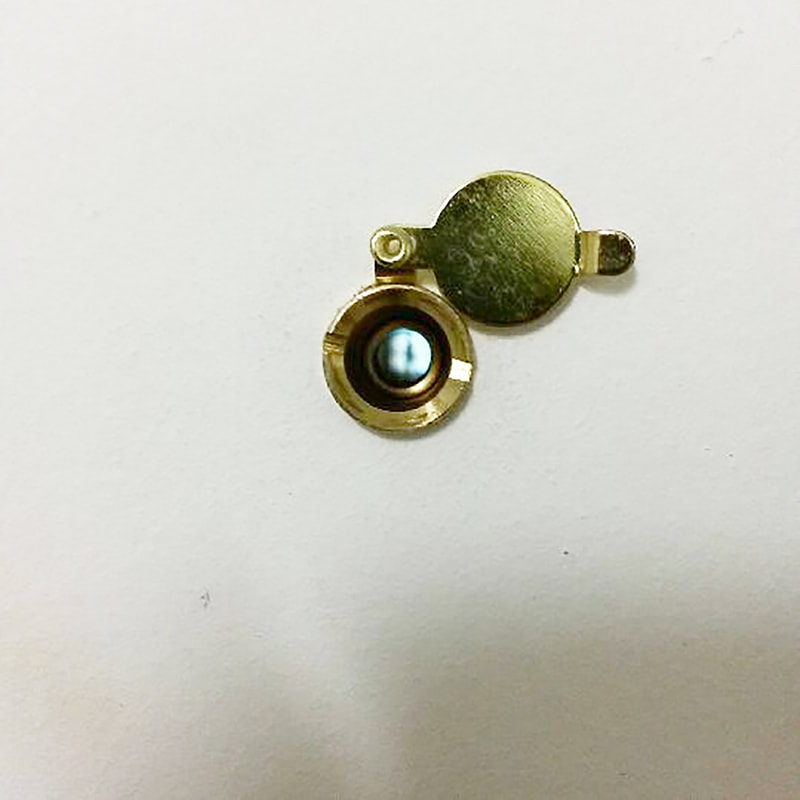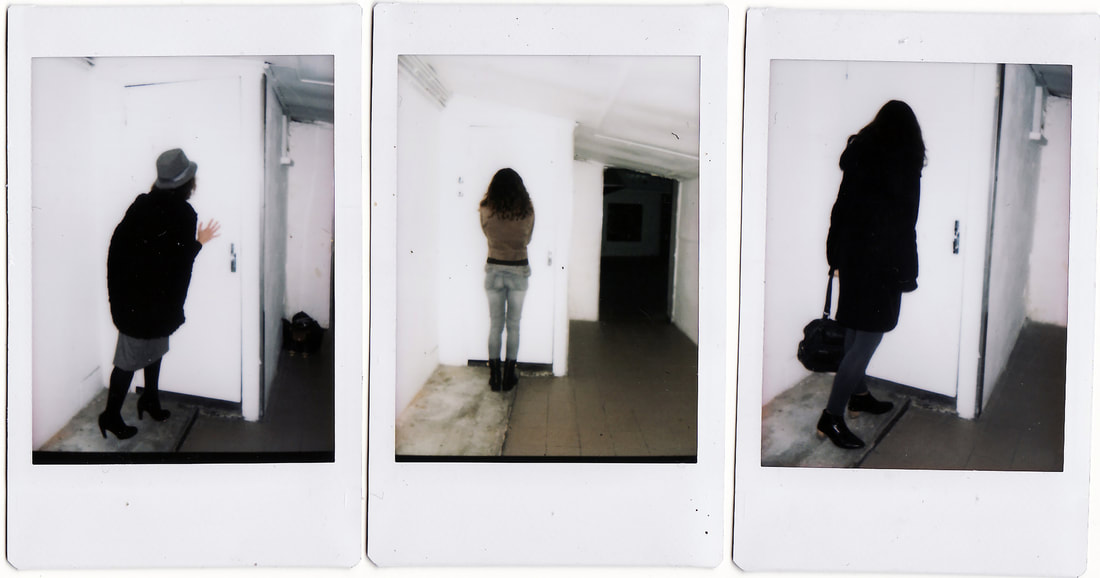|
ÉMILIE MOUTSIS PROPOSES A SUBVERT OF SYMBOLS TO MOVE THE ESTABLISHED ORDER.
CARMEN HUST | APRIL 2017 I'm proposing a subvert of certain symbols to move the established order. As for example by reversing the ratio of masculine superiority over the feminine of our patriarchal inheritance by replacing the cross of a rosary by a vulva. Your work is provoking a reflection upon the individual, in terms of gender, in a cultural contemporary context, in which globalization has favored individualism, rather than union. What sort of dialogue are you trying to launch within your audience? within the world? When I began my research on self-portrait and self-fiction, I wanted to show with irony that the modern world is very egocentric but also that the best way to understand the world and really be a part of it is to know oneself and to accept oneself as one is. What I am trying to say is that if I can bare myself, reveal my flaws, try to fix them through art, then anyone can do it. I also want to show that we must never accept injustice. We must never believe that things are as they are and that we cannot change them, make them better. Viewing your Freeminist(!) project, or in fact, several of your projects, intense, slightly provocative, but also delicate and fine, one seems to recognize a call for equality, rather than discrimination among the genders. Are your works presenting a visual revolution to defy the authority of the established order?
|
I’m trying to propose a subverting of certain symbols to move the established order. As for example by reversing the ratio of masculine superiority over the feminine of our patriarchal inheritance by replacing the cross of a rosary by a vulva.
Talking of love, between or/and among genders, how do you underline the sensuality of (not only) women? Your work is, sorry for the classification, very sensual, powerful, innovative and above all original. Embracing equality one also must acknowledge the change of time (and genders). Do you state that these features don’t belong, any longer, to gender, but to the individual?
It is a very interesting interpretation of my work. I do not necessarily do it consciously but actually it is a possible reading. I also like that my production resonates according to the one who seizes it. If we stick to the construction of the word, Freeminism is the alliance of feminism and freedom. In general, both terms are more than compatible, Feminism being, in particular, a movement for the liberation of women by the conquest of equality between genders. Faced with more insidious forms of domination, this fight is still current. But this libertarian feminism is not a political doctrine, although it is, in fact, a series of intentions and gestures. |
It is rather an artistic impulse, a shout addressed to passers-by. It is not uncommon to find this word inscribed on the walls of Paris, followed by an exclamation point: "Freeministe!" The graphic is light, malicious - punctuation gives it its strength, the weapon of a Fist teasing.
Freeminism was born in the public space, territory of the benches, territory of the males. Its terrain is the street, its medium, graffiti, its regime, illegality. It is fundamentally outlaw and therefore transgressive. Because it was a woman who designed it in a male environment, it is also subversive. Freeminism bears very high the black flag, in the sense that it defies the authority of the established order. It breaks the conventions and goes beyond the framework, not for some strategic reason, but because it is its root, its ontology. Freeminism is finally a physical commitment, since it is seen outside in the street, where the thugs as well as the policemen are often men, with what it implies feeling of power. By the courage he requires, he exhorts to the indomitability and the insubordination of women.
This article is part of ARTICULATE #11. Check out the full release below
|
SUPPORTARTICULATE
www.articulate.nu SUPPORT Monday - Friday 8:00 - 16:00 [email protected] +45 30 48 19 81 Head Quarters VAT DK40953191 |
|







